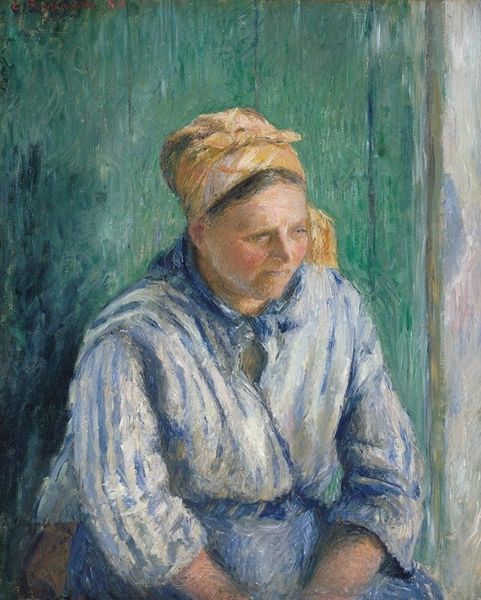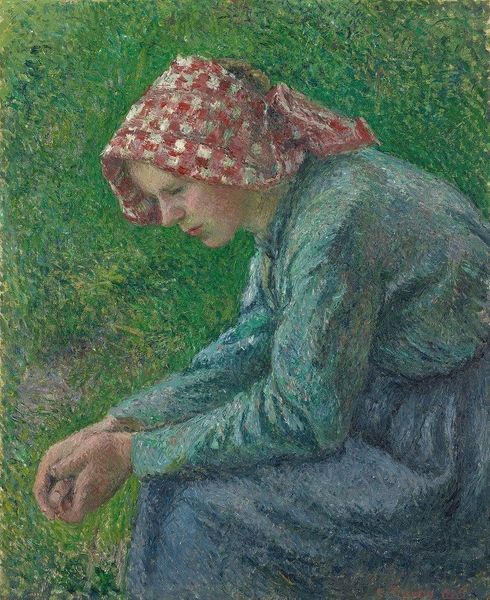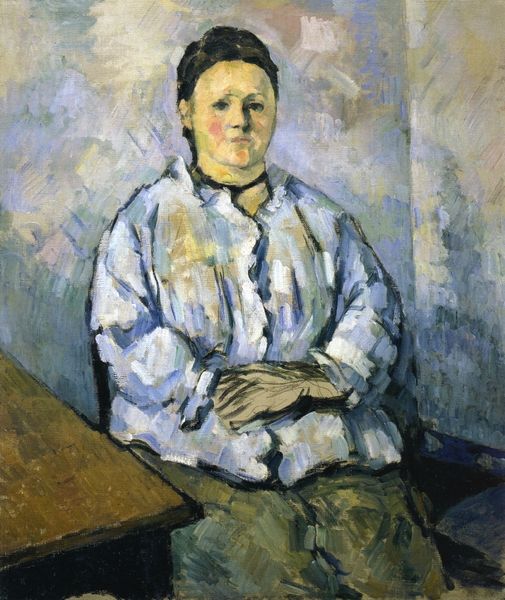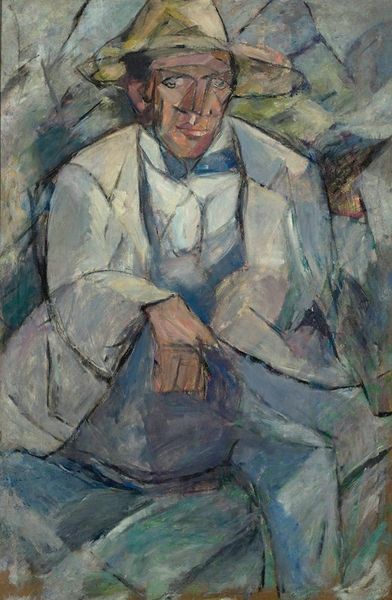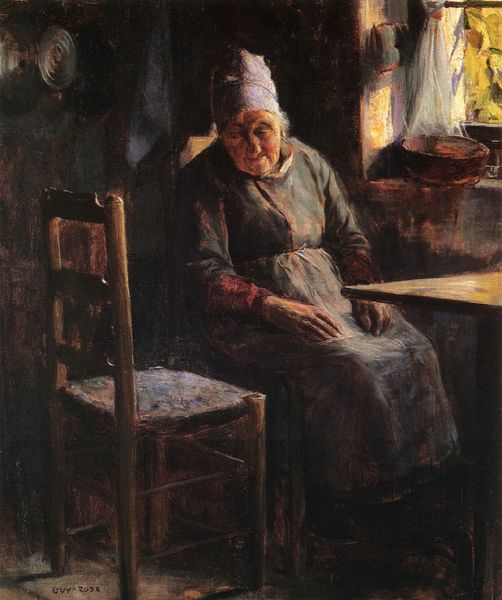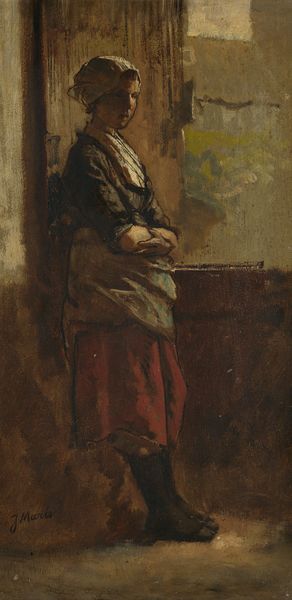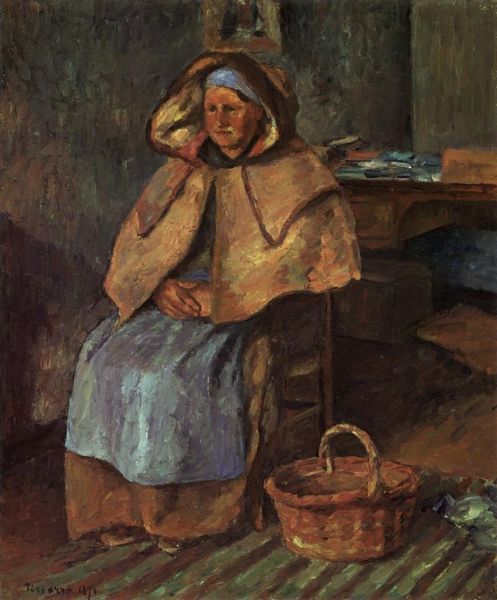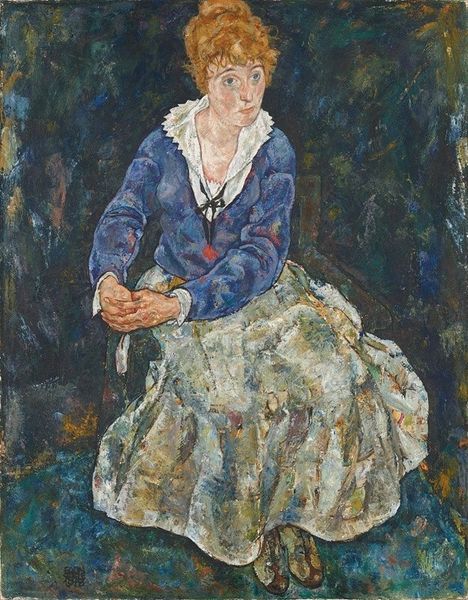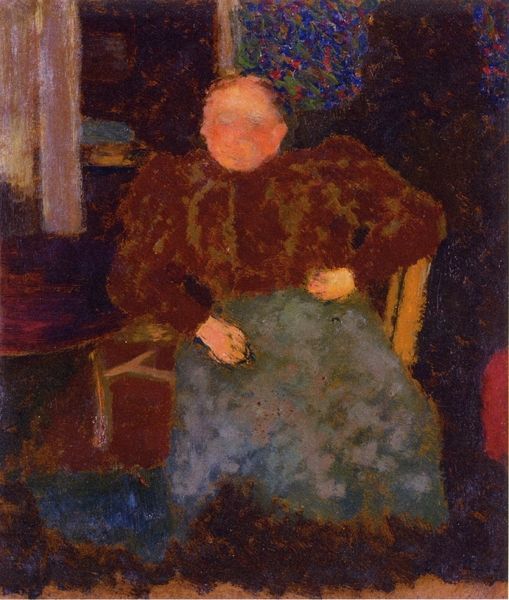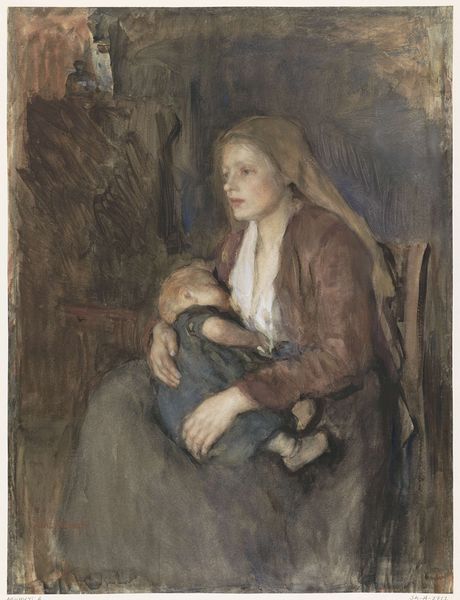
painting, plein-air, oil-paint
#
portrait
#
painting
#
impressionism
#
plein-air
#
oil-paint
#
figuration
#
oil painting
#
genre-painting
Dimensions: 28 3/4 x 23 1/4 in. (73 x 59.1 cm)
Copyright: Public Domain
Curator: Upon first viewing, I’m immediately drawn to the delicate rendering of light and color, imbuing the subject with a profound sense of dignity. Editor: We’re standing before Camille Pissarro's "Washerwoman, Study," an oil on canvas painted around 1880. It’s currently housed here at the Metropolitan Museum of Art. I think what is striking is the subject and what it suggests about the social reality and the labor of women in the late 19th century. Curator: The visible brushstrokes are so crucial. Pissarro is clearly experimenting here with light and form. Look at how the composition directs the eye to the woman's face, softly illuminated against that gentle green backdrop. It's about capturing a moment, an impression. Editor: But it's also a study, implying a certain amount of preparatory work, not to mention an intimate access into the work-a-day lives of ordinary citizens who formed the working class of France. We could really consider the context of industrialization, social stratification and how this affected the very people depicted. Where were these women doing their washing? What were their work conditions and the social standing of that kind of labor? Curator: Undoubtedly. The choice of subject is a reflection of the times, but the way Pissarro renders her speaks to the broader themes of Impressionism itself—capturing light and fleeting moments. Semiotically, this woman may represent a moment in working class existence, but visually, Pissarro's intention seems focused on surface appearance through color and tone to produce form. Editor: Pissarro was politically engaged. While you highlight formal artistic innovation, seeing this outside a vacuum of aesthetic idealism, the representation also speaks to realities of labor and gender of the time. It humanizes her rather than romanticizing her. It shows respect. That headscarf would indicate much. The fabric and clothes suggest more than mere impression of light. The social message comes out as loud as any formal rendering, in fact. Curator: I concede the subject indicates his engagement. Though for me the immediate impression of color harmonies takes center stage when observing it in person. A formal device to speak more loudly. Editor: And yet the materiality, in Pissarro's deft handling of oil paint on canvas, gives us a clear window into understanding something greater about the lived experience of everyday people from this era. Curator: Precisely, and it's through Pissarro’s refined painting language that we understand it still. Editor: Food for thought, indeed.
Comments
No comments
Be the first to comment and join the conversation on the ultimate creative platform.
